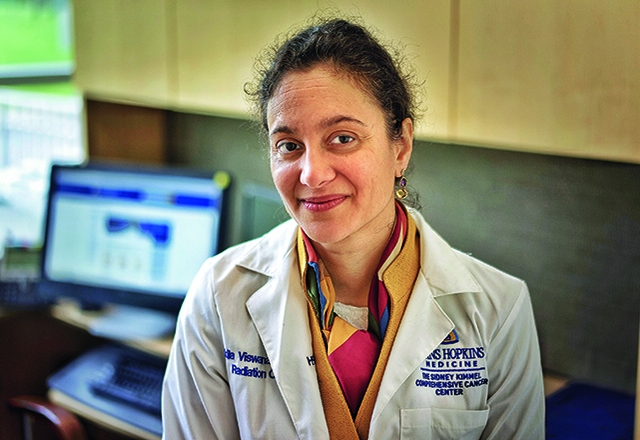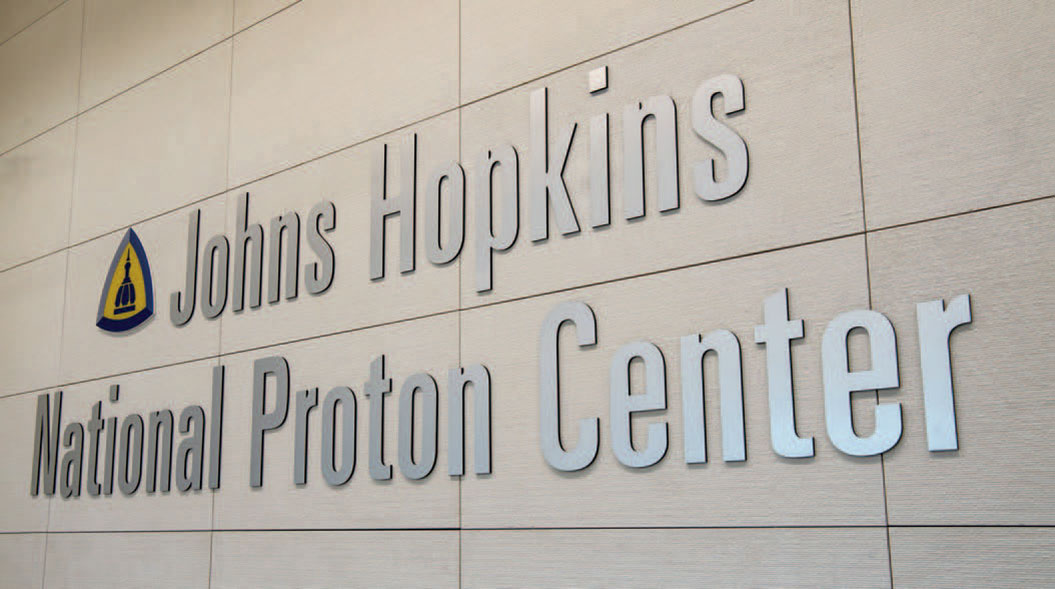To use proton or not to use proton is the question that few centers can solve.

The Kimmel Cancer Center’s excellence in all areas of radiation therapy makes it possible to offer comparative planning. This means the ability to determine which one of its many radiation treatment tools—proton, photon, CT- and MRI-guided brachytherapy, stereotactic ablative radiation, Cyberknife
—is the best option for each patient.
We own all of our machines, so we are not driven by profit to select one machine over others. Patient care—whatever is the best option for the patient—will guide this decision-making."
- Akila Viswanathan, M.D., M.P.H.
“The kind of radiation our experts perform is already very focused in conforming to the tumors. Some centers have been so proton focused they are missing the benefits of other types of radiation,” says Viswanathan. “Proton therapy, for example, cannot substitute for stereotactic ablative radiotherapy, so the benefit of an expert team who can make the important comparisons and correctly determine, patient by patient, which form of radiation therapy is the optimal choice cannot be overstated.”
Stereotactic ablative radiotherapy involves many weaker beams that come from a variety of directions and converge at the tumor to deliver a more precise, higher-dose beam to the cancer.
This kind of comparative planning is another unique service of the Johns Hopkins Proton Therapy Center. For each patient, it involves analysis of imaging and treatment plans for each machine to determine which type of radiation therapy is the best approach. Sometimes it may be a combination.
Every type of radiation therapy has its place, but most centers lack the capability to use data and science to make those judgments. “It’s not always obvious,” says Theodore DeWeese, “so this is another area where expertise is vitally important. All plans are not created equally.”
“There are some cancers, such as those in the brain or near vital organs that should get proton therapy, but there are other cancers that would respond better to photon therapy,” explains Viswanathan. “Some patients might benefit from a combination of both. We may want to treat the main tumor with photons and metastatic sites or lymph nodes with protons.”
Working with our radiation oncologists, our medical physicists use supercomputers to iterate the plans hundreds of times to arrive at the most ideal way to deliver radiation to each patient. The selected plan is reviewed, modifications are made, and it is tested with a virtual avatar of the patient to be sure it has the outcomes anticipated. The end product is precision radiation therapy that has been detailed and confirmed at many levels and specific to the needs of each patient.
